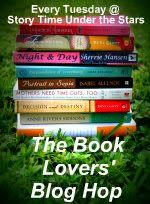I’m Dreaming of a Good Bedtime Book…
Wednesday, May 19, 2010
Can You Plant the Seeds of Dreams?
My Totally Unscientific Theory
 I have no studies or research to back me up here, other than my own parenting experience, but it seemed to me that if B could understand that dreams were not really happening, that might make any scary dreams a little less threatening. So we’ve talked about dreams a lot before bedtime. Sometimes we even make a plan to try to dream about something in particular. A few times B has even invited me to join him in his dreams, and I can only hope I get there! I am a sucker for a good bedtime book that might start out with a reluctant child but ends up with a peaceful sleeper (see my post on Mother, Mother I Want Another). So, when we came across Close Your Eyes, it fit the bill and then some. Not only does reluctant Little Tiger finally surrender to sleep, but Mother Tiger prepares him for dreamland along the way!
I have no studies or research to back me up here, other than my own parenting experience, but it seemed to me that if B could understand that dreams were not really happening, that might make any scary dreams a little less threatening. So we’ve talked about dreams a lot before bedtime. Sometimes we even make a plan to try to dream about something in particular. A few times B has even invited me to join him in his dreams, and I can only hope I get there! I am a sucker for a good bedtime book that might start out with a reluctant child but ends up with a peaceful sleeper (see my post on Mother, Mother I Want Another). So, when we came across Close Your Eyes, it fit the bill and then some. Not only does reluctant Little Tiger finally surrender to sleep, but Mother Tiger prepares him for dreamland along the way!
Handling Bedtime Stall Tactics

 Close Your Eyes, by written by Kate Banks and illustrated by Georg Hallensleben, opens with Little Tiger’s efforts to evade his nap. He complains that if he closes his eyes he won’t be able to see the sky or trees or birds, and Mother counters that they may be even more fantastic in his dreams. But when Little Tiger considers flying like a bird, some worries set in: what if he falls? Or gets lost? Mother Tiger assures him that she’ll catch him, or find him, so there is nothing to be scared of, so Little Tiger begins to imagine some of the amazing things he could do in his dreams. I love the secure feeling imparted at the end of the book, when Little Tiger asks if the dreams will be gone when he wakes. Mother Tiger answers, “Yes, but I will be here.”
Close Your Eyes, by written by Kate Banks and illustrated by Georg Hallensleben, opens with Little Tiger’s efforts to evade his nap. He complains that if he closes his eyes he won’t be able to see the sky or trees or birds, and Mother counters that they may be even more fantastic in his dreams. But when Little Tiger considers flying like a bird, some worries set in: what if he falls? Or gets lost? Mother Tiger assures him that she’ll catch him, or find him, so there is nothing to be scared of, so Little Tiger begins to imagine some of the amazing things he could do in his dreams. I love the secure feeling imparted at the end of the book, when Little Tiger asks if the dreams will be gone when he wakes. Mother Tiger answers, “Yes, but I will be here.”
What is the Difference between Imagination and Dreams?
The line between imaginary play and dreaming is hard to explain to a little one. Developing a vivid imagination is important to the ability to think abstractly which is crucial for understanding the relationship between symbols and meaning in reading. On the other hand, understanding the difference between fantasy and reality is important for safety’s sake and for handling the inevitable bad dream. One way to help make the difference a little clearer: talk with your child about the decision making involved. During imaginary play, she decides what pretend events occur, and when she decides to stop pretending, the game is over. Dreams are different, because they occur without that decision-making process, but when a dream ends, the experience is over just the same. Explaining this to B hasn’t completely prevented some late night cuddle sessions to console a bad dream, but I’m glad he knows that like Mother Tiger, I’ll always be there when he wakes up.
Appropriate for toddlers, preschoolers, primary grades.
It seems that my dreams are often populated by a mixed up conglomeration of the day’s events and the random thoughts or worries that crowd my brain before I drift off to sleep. B’s dreams often seem to be directly correlated to the books we read before bedtime, or sometimes to the stories Daddy tells. I think it’s been almost a year now that B has been able to remember and articulate what he dreams about, and to differentiate it from reality. This ability comes at different ages for different children, but it’s intriguing no matter what. Haven’t you ever gazed at your sleeping child and wondered what she is dreaming about? Babies are even more curious – as little grimaces and grins cross their sleeping faces, I can’t help but wonder what experiences could be prompting those emotions in their dreams.
My Totally Unscientific Theory
 I have no studies or research to back me up here, other than my own parenting experience, but it seemed to me that if B could understand that dreams were not really happening, that might make any scary dreams a little less threatening. So we’ve talked about dreams a lot before bedtime. Sometimes we even make a plan to try to dream about something in particular. A few times B has even invited me to join him in his dreams, and I can only hope I get there! I am a sucker for a good bedtime book that might start out with a reluctant child but ends up with a peaceful sleeper (see my post on Mother, Mother I Want Another). So, when we came across Close Your Eyes, it fit the bill and then some. Not only does reluctant Little Tiger finally surrender to sleep, but Mother Tiger prepares him for dreamland along the way!
I have no studies or research to back me up here, other than my own parenting experience, but it seemed to me that if B could understand that dreams were not really happening, that might make any scary dreams a little less threatening. So we’ve talked about dreams a lot before bedtime. Sometimes we even make a plan to try to dream about something in particular. A few times B has even invited me to join him in his dreams, and I can only hope I get there! I am a sucker for a good bedtime book that might start out with a reluctant child but ends up with a peaceful sleeper (see my post on Mother, Mother I Want Another). So, when we came across Close Your Eyes, it fit the bill and then some. Not only does reluctant Little Tiger finally surrender to sleep, but Mother Tiger prepares him for dreamland along the way!Handling Bedtime Stall Tactics

What is the Difference between Imagination and Dreams?
The line between imaginary play and dreaming is hard to explain to a little one. Developing a vivid imagination is important to the ability to think abstractly which is crucial for understanding the relationship between symbols and meaning in reading. On the other hand, understanding the difference between fantasy and reality is important for safety’s sake and for handling the inevitable bad dream. One way to help make the difference a little clearer: talk with your child about the decision making involved. During imaginary play, she decides what pretend events occur, and when she decides to stop pretending, the game is over. Dreams are different, because they occur without that decision-making process, but when a dream ends, the experience is over just the same. Explaining this to B hasn’t completely prevented some late night cuddle sessions to console a bad dream, but I’m glad he knows that like Mother Tiger, I’ll always be there when he wakes up.
Appropriate for toddlers, preschoolers, primary grades.

























2 comments:
I just love that little tiger on the cover! I haven't thought about talking about dreams with my girls, but what you are saying makes a lot of sense. They don't have bad dreams very often and are very sound sleepers, but it would be good to talk about how dreams are not real. Good advice!
I can't wait to see more of your site!
Post a Comment